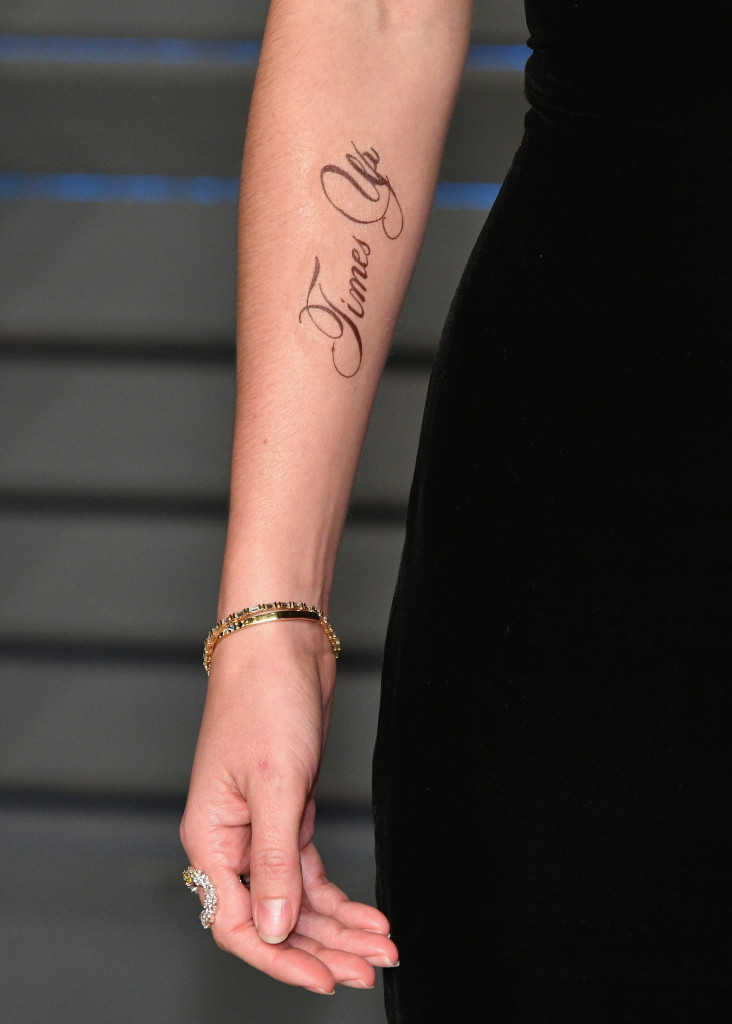Typos can spell big trouble — especially at work.
Australia printed 400 million innovative new $50 banknotes ($34.90 in U.S. dollars) in October with slick anti-counterfeiting measures such as a holographic “50″ and a flying swan. Alas, the new bill — which is the country’s most popular banknote — also features the word “responsibility” misspelled as “responsibilty” with a missing “i.” Triple M radio posted a magnified picture of the funny money on Thursday, circling the mistake that wasn’t caught for almost seven months — and after 46 million copies of the faulty currency has already entered circulation. The total value of the notes in circulation is around $2.3 billion ($1.6 billion U.S. dollars).
While the Reserve Bank of Australia took responsibility for the slip-up on Thursday, CNN reported that it was actually aware of the typo last December. It will be corrected when the next batch of bills is printed later this year. “These banknotes are legal tender and can continue to be used as normal. It does not affect their validity and functionality in any way,” a spokeswoman told CNN. “We have reviewed our processes to remove the likelihood of such an error occurring in the future.”
This is certainly not the first high-profile grammatical goof to make headlines, however. YouTube star and product influencer Olivia Jade Giannulli, whose parents Lori Loughlin and Mossimo Giannulli are two of the boldfaced names recently charged in “Operation Varsity Blues” for allegedly paying $500,000 to guarantee their two daughters admission into the University of Southern California, had her trademark application declined — over improper punctuation.
The U.S. Patent and Trademark Office sent out a notice in March that the 19-year-old must “correct the punctuation in the identification to clarify the individual items in the list of goods.” It took issue with this phrase in particular: “make up kits comprised of moisturizer, primer, concealer, foundation, make-up powder, make-up pencils, eye make-up, eyeshadow, eye liner, mascara, blush, highlighter, bronzer, make-up setting spray lipstick lip gloss, lip stains, make-up remover.”
The March 15 letter then gave the elite college student a punctuation lesson on how to use commas and semicolons, explaining, “Proper punctuation in identifications is necessary to delineate explicitly each product or service within a list and to avoid ambiguity.”
It added that, “Commas, semicolons and apostrophes are the only punctuation that should be used.” (Her application was later approved once she edited her mistakes and resubmitted her claim.)
And while “CBS Evening News” anchor Jeff Glor was reporting on the sexual misconduct allegations against the CBS CEO Les Moonves last August, the story graphic behind him misspelled the name of the network honcho.
“Mooves Mum,” it read — and viewers were quick to call out the spelling mistake on Twitter. Neither the network nor Glor have responded to the slip-up yet, but the mistake has been fixed on a video of the segment archived online.
ASOS also printed 17,000 shipping bags last year with “onilne” instead of “online” in its tagline, “Discover shopping online.” A spokesperson tried saving face by tweeting, “Ok, so we *may* have printed 17,000 bags with a typo. We’re calling it a limited edition,” on Wednesday. The rep also noted that, fortunately, those thousands of now-garbage bags are recyclable.
Emma Watson also used self-deprecating humor when she was called out for her grammatically-incorrect temporary “Time’s Up” tattoo at the Vanity Fair Oscar party last year. Rather than being the Belle of the ball, the “Beauty and the Beast” star became the butt of jokes after readers noticed it was missing its apostrophe. Watson responded with grace, tweeting, “Fake tattoo proofreading position available. Experience with apostrophes a must.”
 Getty Images
Getty Images
And President Trump’s State of the Union address in January 2018 was an opportunity to celebrate his accomplishments in the first year in office. Unfortunately, the speech got somewhat overshadowed by a glaring typo on the tickets to the State of the “Uniom” address. And the error wasn’t even his fault, considering the Sergeant at Arms office was responsible for printing the tickets. And Hofstra misspelled Hillary Clinton’s name as “Hilary” on passes for the first presidential debate between Clinton and Trump in 2016. Plus, a 2013 CareerBuilder survey found that 58% of resumes have typos.
Mistakes happen. Scott W. Johnson, owner of WholeVsTermLifeInsurance.com, told MarketWatch about the time years ago when he sent an email to his general manager, Mirjana — but the spell checker had changed her name to “Marijuana.”
“The blood drained out of my face. I was going to be fired six weeks into the job because I called my boss an illegal drug!” he said. He quickly confessed to his supervisor, who assured him that the GM was more likely to call out his sales over his typo. “I later learned how to add her name to the spelling dictionary, and I did one day become one of her very best salespeople,” he said.
But misspellings and grammatical errors can still wreck your workplace reputation if you don’t mitigate the damage quickly. Take those too-common resume typos; 61% of recruiters will reject a resume or CV because of them.
 Getty Images/iStockphoto
Getty Images/iStockphoto
“Spelling really does matter when it comes to the business brand, and also when it comes to your personal brand,” Ladan Nikravan Hayes, a career adviser at CareerBuilder, told MarketWatch. “Grammar, spelling and punctuation represent your outward image to the world, and the person reading it is getting a message about you, your authority and your attention to detail.”
Or lack of. That’s because research shows that such errors make readers perceive the writer or business as being less intelligent, less trustworthy and less conscientious.
Good grammar spells success. A 2013 Grammarly survey of 100 native English speakers’ LinkedIn profiles found that those with the fewest grammatical errors received more promotions and attained higher-level positions than those whose profiles showed more mistakes. U.K. analyst Charles Duncombe found that online sales were cut in half if a brand’s website contained just one spelling mistake. And a Global Lingo survey revealed that 59% of potential customers said they turn away from a company with errors on its sales and marketing materials.
To err is human — and to ‘fess up and fix it is divine. Here’s some tips from career experts and workers who have learned from their on-the-job grammar mistakes.
Assess whether it’s worth addressing. Not all mistakes are created equal. A misplaced comma on a resume, or a minor coding error, isn’t as glaring as misspelling the name of the potential employer, giving the wrong sales price, or publishing the wrong event date. “It may not be necessary to call attention to a missed comma or period,” said Hayes. But you will need to issue an apology and a correction for something that spreads confusion or misinformation.
Keep the apology professional. Don’t respond with “OMG I’m so sorry,” or stressing that you’re “so embarrassed” and “this never happens.” With an error-laced email or newsletter, simply send a response with “Correction,” “Oops” or “We Apologize” in the subject line so that your audience knows why they are getting a second message, and highlight the update: “A previous version of this invitation listed an incorrect address.” Similar rules apply to a social media post; make the edit, highlight the correction and briefly apologize for any confusion.
But make a more personalized gesture if you’ve truly offended someone. When publicist Robert Barrow addressed a sales rep by the wrong name, she took it to her boss, “which made it even more embarrassing,” he told Moneyish. “I profusely apologized and sent her some flowers.”
Confess before you’re called out. Career coach Heather Monahan has caught plenty of resume mistakes after two decades working as a hiring manager. “I have seen countless typos and errors that never go addressed in hopes that I wouldn’t notice. Those are typically the candidates I pass over immediately,” she said. So send the hiring manager a clean copy of your resume — ideally before she’s had a chance to read the first one — writing something like, “Here is an updated version of my resume. I sent out the wrong copy earlier.” This illustrates that you’ll own up to your mistakes, correct them and communicate honestly.
Fix it ASAP. Try to get your corrected copy out as soon as you can. The beauty of online content like social media posts or website code is that it can often be fixed within a few minutes, so it doesn’t have to be wrong for long. And if there’s time to send out a new batch of corrected invitations, or to reprint charts or materials for a presentation, it’s worth the added stress and expense to make a good second impression.
Marketing director Rodney Brazil was able to catch a huge mistake on a press release for HomeWetBar.com — which the spell checker had let slip through as HotWetBar.com — before it went to a larger distribution service. “Luckily, I was able to send a revised version to local media, and update the press release before sending it to the distribution service. Two of the outlets responded, thanking me for the prompt follow up, joking that they had been guilty of publishing awkward typos, too,” he said. “I learned a vital lesson about taking the time to carefully check every single word of each and every document, even if you are in a rush to publish.”
Use humor where appropriate. Monahan once realized that an incorrect graph was placed in her PowerPoint presentation just as she was walking into a client meeting. “When I got to the slide with bad information, I asked the room what they thought about the data,” she said. “The room was very unhappy and making negative comments, and I responded, ‘Actually, this slide is wrong, but I knew if we lowered expectations for a moment, you would feel that much more excited about our real numbers. Let me explain them to you.’ The tension in the room broke, and I even got a few chuckles.” It humanizes you, and reminds the audience that you are not the first person to make a mistake — and you won’t be the last.
This story was originally published on Jan. 31, 2018, and has been updated with Australia’s banknotes.










Add Comment